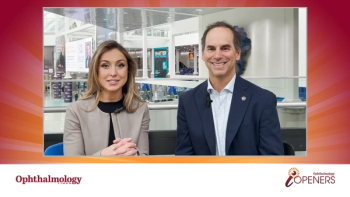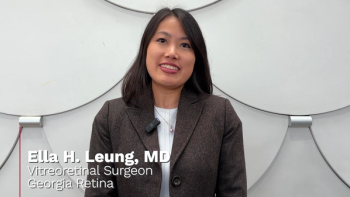
Crowds for hire: Finding the voice of patient needs
Medication compliance and regular exams are important to maintaining healthy vision. Turn your patients into a loyal ‘fan base’ with these consumer-friendly tips.
Editor’s Note: Welcome to “
Would your patients walk 500 miles for an eye health appointment? If you can’t hear the music embedded in this blog, start your internal audio of the Proclaimers’ hit “
Think about how an army of devoted, sold-out fans compares to your patients.
Why isn’t devotion a thing in eyecare and premium eyewear purchases? It is with other lifestyle enhancement items.
One barrier may be the way you and your staff talk about your services. For example, “Optical is just a convenience. We do mainly medical in my practice.”
I’m not saying it’s not important. You are saving vision and that’s your jam. Please continue to expand your skills. What I am saying is that do not do so at the expense of total patient care.
Fear of blindness
The author, Sarah Rense, wrote the following profound sentence: “Blindness, for those keeping track, is often preventable with regular healthcare.”
When someone asks, “What do you do?” Answer with, “We prevent
You will be on your way to building a fan base of dedicated patients and the practice of your dreams. It means knowing and acting on the awareness that you are going to calm fears. Assurances that create patients willing to walk 500 miles to fall down at your door.
Fear of losing sight has a strong emotional element. Rational assurances of eye health do not make blurred vision go away. The consumer links poor acuity with vision loss. Providing quality eyewear is a total person fix.
This is one reason we don’t see (at least for now) “medical eyecare” chains and do see optical chains. There are healthier eyes in most of these practices than medical ones.
The optical side of our industry, managed properly, is hugely profitable in part because it assuages fears of blindness. The hard, demographic facts remain that there are fewer sick eyes than eyes that can be made to see better with glasses.
Embrace retail
First, accept that the optical side of your practice instills patient confidence in your medical skills. Don’t run 500 miles. Embrace the total patient and his or her fears!
Go and learn about marketing and merchandising of premium products. (You don’t sell premium products? You do? Ask your patients if they think that’s the case.) What is it about a modern, premium product store that makes it so appealing? What is it about your least favorite store that make it not so appealing?
Your job is to communicate: Take charge of selection.
The number one flaw of the optical: self-help and allowing the consumer to order “just what my insurance covers.”
Computer stores do not encourage browsers. They know a fan that will walk 500 miles for next generation tech wants something custom built.
Learn the story behind every frame and spectacle lens package you sell. Begin the story of visual comfort and clarity when you greet that patient. (This is called “lifestyle questions.”) Caring communicators first listen to patients.
They actively listen as he or she describes their most visually challenging situations. In the optical, the optician confirms the doctor’s recommendation and then takes charge of the sales and education process.
Having patients browse or wander around your optical is setting them up for confusion and your practice for reduced sales. Put yourself in a situation where you’re confronted with choosing one item out of 700 possibilities. Wouldn’t you want some guidance?
Better and more consistent staff training
You take CE to stay up to date, shouldn't your staff? One argument that often comes up is, “We're so busy, we can't close and give up appointment slots.” If you're also saying, “We're so busy but we're not maximally profitable,” there's a good chance that taking time to catch your breath once a week and focusing on office procedures with your staff is a great idea. Clearly, you can't afford not to close for about an hour each week.
If your practice is slow, the same thought still applies: You need to devote time to keeping your staff top notch, no matter what your patient volume. Successful eyewear recommendations match the patient’s visual and lifestyle needs. Every person who comes into your office should be asked to fill out a questionnaire that focuses on both health and lifestyle issues. Your pre-tester can then ask how much time the patient spends doing each potentially visually challenging activity.
Don’t know how to train employees to emotionally connect and listen? The following is my go-to list:
- take them to trade shows;
- invite an industry trainer (like me) to your practice;
- have employees scour the internet for premium eyewear information;
- have them read
eyecare journals ;
- have them find and watch vendor-made YouTube infomercials;
- have a “gathering lifestyle information” contest with the grand prize-perhaps a night’s lodging at the
Ritz Carlton , or a boutique luxury hotel/inn near you;
- enlist the help of the product manufacturers’ sales force.
In fact, have your staff ask sales reps the same questions asked by patients, and have them role-play the answers. Videotape these training sessions, and document them in a transcript. Then, compose a test from the transcript. Use this test as a training tool for new employees as well as a refresher course for your veteran staff members.
To help elevate your staff’s level of understanding of the nature of the sales process, take them on field trips to non-medical venues that sell premium products. For example, a shopping trip to a local high-end retail department store. Silence nay-sayers by providing them with a sheet to fill out.
This fill-in-the-blank should include the following answers to the HOW question:
- they were greeted;
- the products were displayed;
- their individual needs were addressed;
- the merchandise was shown to them and put back;
- The sales check-out process was and whether any follow-up instigated another sale or lead toward building a better customer relationship.
- When your staff returns, have them discuss their “findings” at a staff meeting, and brainstorm ways to make your patient’s buying experience more positive.
A deserving practice
Remember, as with a trip to a
“Blindness, for those keeping track, is often preventable with regular healthcare.”
Premium eyewear leads to patient compliance with treatment plans. By following the tips mentioned above, you and your staff will see the power of clear vison. Only then will you get your patients to see premium eyewear as more than devices that hold lenses paid for by vision plans that allow them to see “just OK.”
I challenge you to make sure all your medical patients have a great pair of up-to-date glasses that you are proud to have them wear. That way, you’ll be happy to say, “I do a lot of optical” with the same zeal that you profess your medical victories.
Newsletter
Don’t miss out—get Ophthalmology Times updates on the latest clinical advancements and expert interviews, straight to your inbox.



















































.png)


